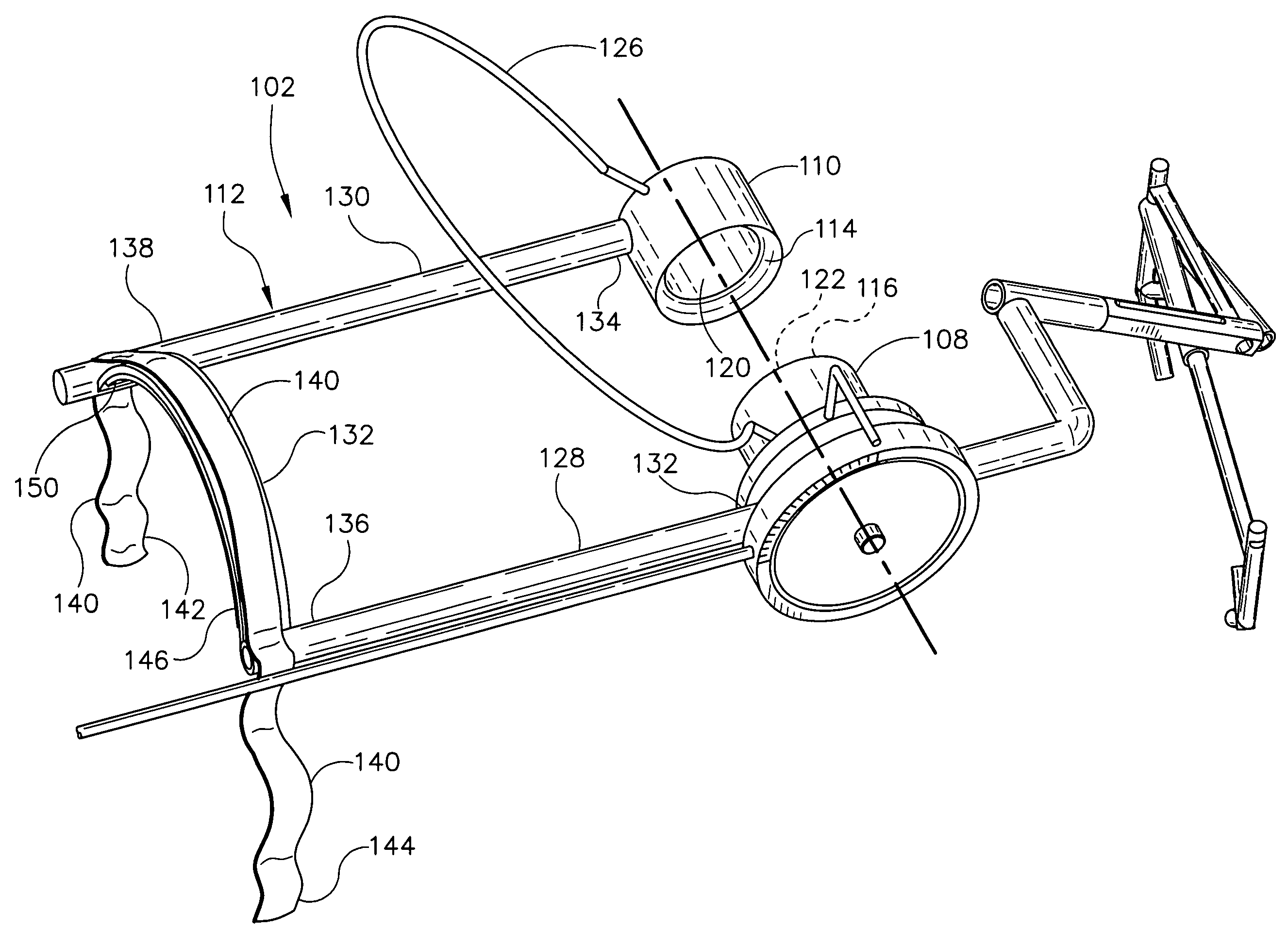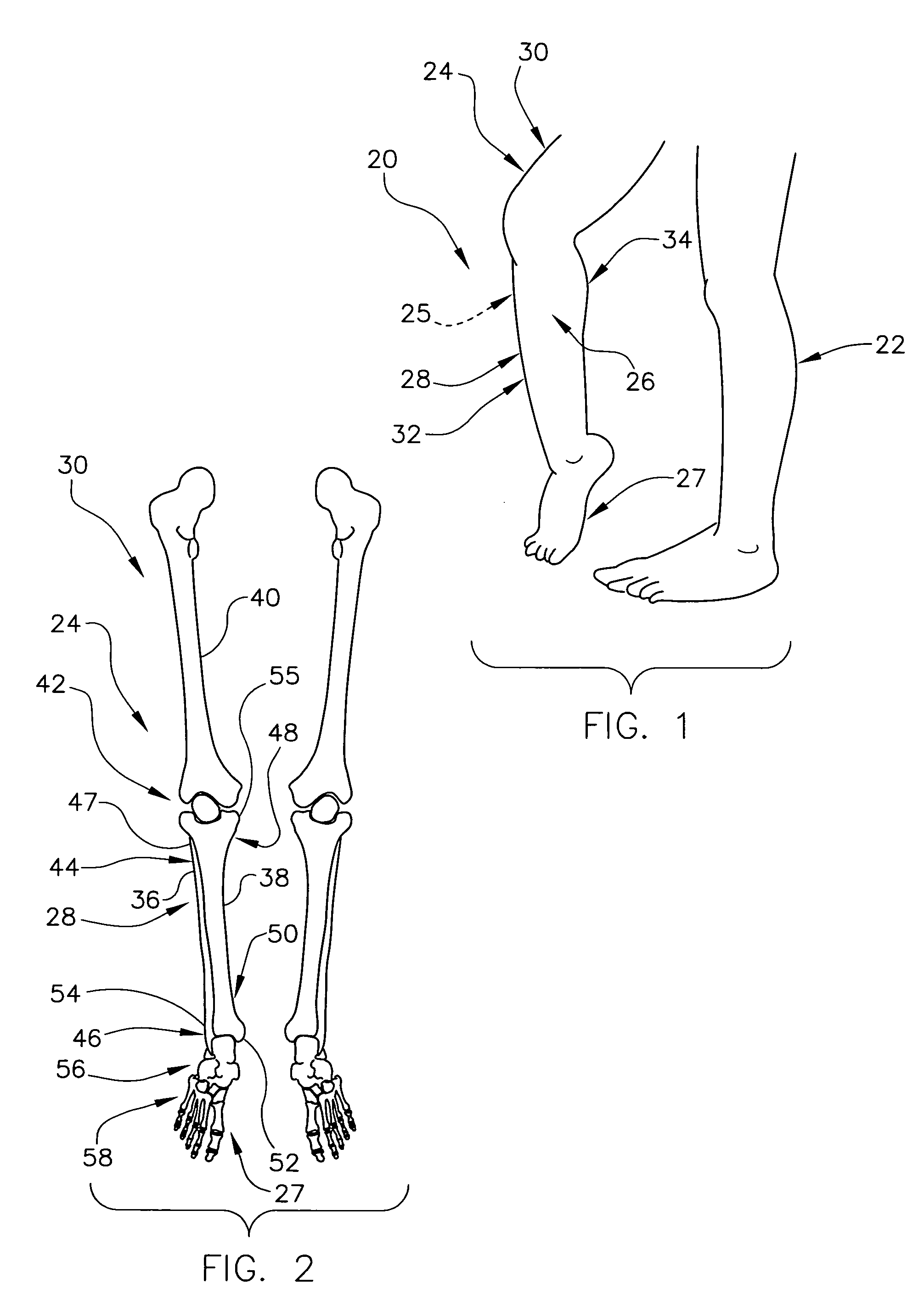Method and apparatus for determining a dorsiflexion angle
- Summary
- Abstract
- Description
- Claims
- Application Information
AI Technical Summary
Problems solved by technology
Method used
Image
Examples
Embodiment Construction
[0017] Referring now to the drawings, and more specifically to FIG. 1, a surgical patient's lower body is designated in its entirety by the reference numeral 20. The lower body 20 includes a left leg (generally designated by 22) and a right leg (generally designated by 24). The right leg 24 includes a lateral (i.e. outer) side (generally designated by 25), a medial (i.e. inner) side (generally designated by 26), a foot (generally designated by 27), a lower portion (generally designated by 28), and an upper portion (generally designated by 30). The lower portion 28 of the right leg 24 includes a shin (generally designated by 32) and a calf (generally designated by 34). The left leg 22 represents a leg having normal function, while the right leg 24 represents a leg having an equinus deformity. More specifically, the gastronemius and soleus muscles (not shown) of the calf 34 of the right leg 24 are permanently contracted. Tendon surgery (e.g., Heel cord lengthening (HCL) surgery) may b...
PUM
 Login to View More
Login to View More Abstract
Description
Claims
Application Information
 Login to View More
Login to View More - R&D
- Intellectual Property
- Life Sciences
- Materials
- Tech Scout
- Unparalleled Data Quality
- Higher Quality Content
- 60% Fewer Hallucinations
Browse by: Latest US Patents, China's latest patents, Technical Efficacy Thesaurus, Application Domain, Technology Topic, Popular Technical Reports.
© 2025 PatSnap. All rights reserved.Legal|Privacy policy|Modern Slavery Act Transparency Statement|Sitemap|About US| Contact US: help@patsnap.com



